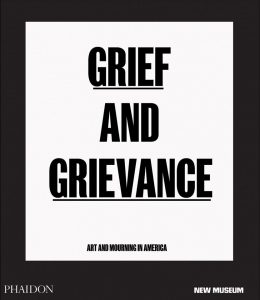Copyright © 2025 Motivate Media Group. All rights reserved.
id Library: Books that present art and architecture’s role in preserving memory and exploring race and grief
The two books in our library this month tackle topics such as race, memory, grief, loss and hope

This month’s book selection explores the ability of art and architecture to immortalise the human experience, tackling topics such as race, memory, grief, loss and hope.
 Grief and Grievance: Art and Mourning in America
Grief and Grievance: Art and Mourning in America
Okwui Enwezor
Published by Phaidon
Grief and Grievance: Art and Mourning in America is a timely and urgent exploration of the ways artists have grappled with race and grief in modern America, conceived by the late legendary Nigerian curator, art critic and writer, Okwui Enwezor, who helped bring global attention to African art. Featuring works by more than 30 artists and writings by leading scholars and art historians, this book — and its accompanying exhibition (also conceived by Enwezor) — gives voice to artists addressing concepts of mourning, commemoration and loss while considering their engagement with social movements, from Civil Rights to Black Lives Matter.
Grief and Grievance includes the works of artists including Jean-Michel Basquiat, Carrie Mae Weems, Nari Ward and Terry Adkins. It also includes essays by the likes of Elizabeth Alexander, Naomi Beckwith, Judith Butler, Ta-Nehisi Coates, Massimiliano Gioni and Saidiya Hartman.
 In Memory of: Designing Contemporary Memorials
In Memory of: Designing Contemporary Memorials
Spencer Bailey
Published by Phaidon
In Memory of: Designing Contemporary Memorials explores the art, architecture and design of memorials around the world from the late twentieth century to today. The 240-page book is illustrated with 200 photographs and features over 60 memorials designed by leading architects including David Adjaye, Tadao Ando, Diller Scofidio + Renfro, Peter Eisenman, Daniel Libeskind, Snøhetta and Peter Zumthor. In Memory of opens with a moving foreword by Adjaye, and includes his 2013 Gwangju Pavilion and 2016 Smithsonian National Museum of African American History and Culture.
“This book comes at a time of rethinking spatial storytelling,” he writes. “It is encouraging us to look more critically at the memorials we’ve made in the past, and question the relevance of memorials in the twenty-first century.
“…The narrative of memorials is a device to project the many things facing people across the planet: nationhood, citizen rights, human rights, climate action. Memorial form is an important act of un-forgetting. I believe this book makes a valuable contribution to the debate about the form of memorialisation and the shape that it can take in the future.”
In Memory of includes a collection of exceptional structures that commemorate some of the most destructive events across the world, including war, genocide, terrorism, famine and slavery – with the urge to immortalise these events within our collective consciousness. The thoughtful essays on the subjects of hope, strength, grief, loss and fear help to contextualise the projects and address the emotional aspects of memorialisation.
The Latest
Highlights of the Biennale Architettura 2025
We shine a light on the pavilions from the Arab world at the Venice Architecture Biennale, on display until Sunday 23 November 2025
Read ‘Bold Design’ – Note from the editor – July/August 2025
Read identity magazine's July/August 2025 edition on ISSUU or grab your copy at the newsstands.
Things to Covet in June 2025
Elevate your spaces with a pop of colour through these unique pieces
Designing Spaces with Purpose and Passion
We interview Andrea Savage from A Life By Design – Living & Branding on creating aesthetically beautiful and deeply functional spaces
Craft and Finesse
EMKAY delivers a bold and intricate fit-out by transforming a 1,800 sqm space into SUSHISAMBA Abu Dhabi, a vibrant multi-level dining experience
An Impressive Entrance
The Synua Wall System by Oikos offers modularity and style
Drifting into Summer
Perennials unveils the Sun Kissed collection for 2025
The Fold
Architect Rabih Geha’s collaboration with Iwan Maktabi
From Floorplans to Foodscapes
For Ayesha Erkin, architecture was never just about buildings, but about how people live, eat, gather and remember
Between Sea and Sky
Cycladic heritage, heartfelt hospitality and contemporary design converge on Deos Mykonos, designed by GM Architects
A Fresh Take on ’70s Style
Curved shapes and colourful artworks bring vibrancy to this contemporary home with mesmerising nature views
















